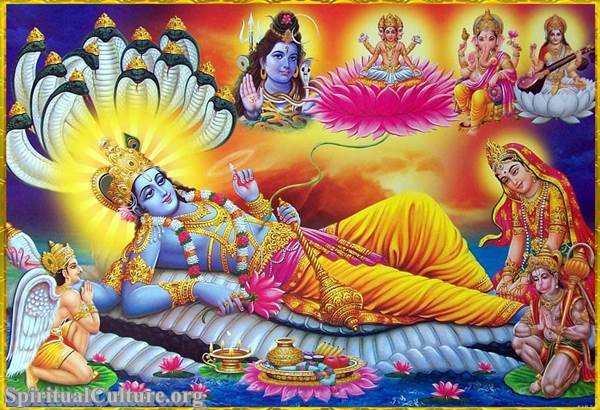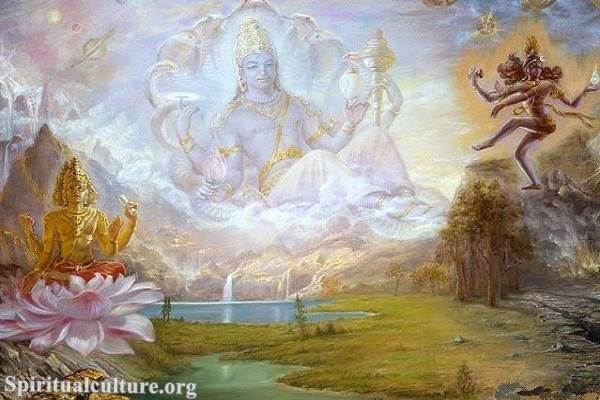He is a significant figure in the Puranic texts.
Adi Sesha is primarily associated with Lord Vishnu and serves as his bed or couch in the cosmic ocean.

Here are key aspects of Adi Sesha and his symbolism:
Cosmic Serpent:
Adi Sesha is described as a massive, multi-headed serpent with a thousand heads. The term “Ananta” means endless or infinite, signifying the limitless nature of Sesha. He is often depicted coiled around Mount Mandara or floating on the cosmic ocean.
Vahana of Vishnu:
Adi Sesha is Lord Vishnu’s divine seat or couch (Shayana). Vishnu reclines on the coils of Sesha in the celestial ocean called Kshira Sagara or the Ocean of Milk. This symbiotic relationship symbolizes the cosmic balance and the support of the universe.
Cosmic Stabilizer:
Adi Sesha is believed to provide support to the entire universe. In his role as the bed of Vishnu, he sustains the cosmic order and prevents the universe from collapsing.
Symbol of Time:
The serpent’s coils are sometimes interpreted as representing the cycles of time. The circular shape signifies the eternal and cyclical nature of creation, preservation, and dissolution.
Vehicle for Vishnu’s Avatars:
In various Hindu texts, when Lord Vishnu descends to Earth in his various avatars (incarnations), Adi Sesha is said to take on different forms to serve as the mount (vahana) for Vishnu. For example, in the form of Matsya (the fish), Vishnu is said to ride on Adi Sesha.
Symbol of Anugraha (Grace):
Adi Sesha is associated with the concept of divine grace. As the cosmic serpent that supports Vishnu, he represents the benevolent and supportive nature of the divine towards the universe.
Narrator of Puranas:
In some Puranic stories, Adi Sesha is described as the narrator of the Puranas to the gods. In this role, he imparts wisdom and knowledge to the celestial beings.
Symbol of Balance:
Adi Sesha’s role as the support of Vishnu symbolizes the delicate balance in the cosmic order. It represents the interdependence of various forces and elements that contribute to the harmonious functioning of the universe.
Naga King:
In certain texts, Adi Sesha is considered the king of the Nagas (serpents). His significance extends beyond his role as Vishnu’s seat, and he is sometimes associated with various myths and legends involving other deities and celestial events.
Adi Sesha in Other Traditions:
The concept of a cosmic serpent supporting the universe is not unique to Hinduism. Similar ideas exist in other mythologies and religious traditions, reflecting a universal symbolism of serpents as potent symbols of creation, preservation, and cosmic order.
Adi Sesha’s symbolism underscores the interconnectedness of the cosmos and the vital role played by various mythical entities in maintaining cosmic balance and order in Hindu cosmology.

